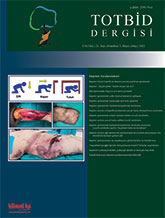
Earthquakes are natural events that are common all over the World and are certain to be seen in the future. Those with a magnitude of 6.4-7.5 on the Richter scale can cause serious destruction and loss of life. The rate of dead and injured is almost 1/3 in such an earthquake of this scale. Approximately 75-80% of deaths are due to structural buildings collapse during or immediately after the earthquake, 5-10% to problems that develop as a result of damage to vital infrastructure, the rest appears to be due to medical problems in the following days. Crush syndrome is one of the most important of these problems. The main trigger in pathogenesis is rhabdomyolysis due to compression of extremity muscles. The continuation of the compression under the rubble hampers the mixing of the toxic burden of damaged muscles to the systemic circulation. However, the extrication leads reperfusion and causes hypovolemia, hemodynamic deterioration, hemoconcentration hyperkalemia, hyperphosphatemia, metabolic acidosis, oliguria, myoglobulinuria, acute kidney injury, multiple organ dysfunction syndrome and mortality, if appropriate medical approach is not achieved. Intravenous fluid therapy started empirically and aggressively under the rubble is very important for reducing the risk of these complications. In patients who are lucky enough to reach hospital, electrocardiography (ECG), for timely diagnosis and intervention, should be the first test to detect the hyperkalemia which is the main causes of premature death. Medical problems that develop on monitoring period should be treated multidisciplinary and therapy with follow-up should be individualized for each case.